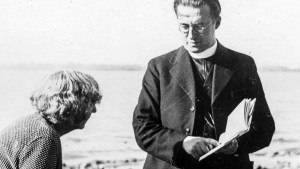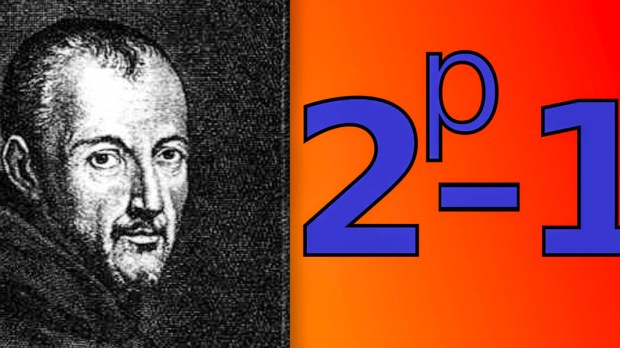Prime numbers transcend any culture, in that they are prime whether or not people use a base-60 number system (like the Babylonians did) or a base-10 system (like our decimal notation). Because of this universal consistency, mathematicians regard primes as the building blocks of the numerical universe.
And there’s a whole category of prime numbers – Mersenne primes – that bears the name of Marin Mersenne, a French priest and polymath who devised a method of identifying new primes.
Mersenne was born on September 8, 1588, in a small town in northwestern France. As a teenager, he enrolled at a local school run by Jesuits. One might assume they gave a solid education, for the future prime number priest was not the only eminent pupil; there was also a boy named René Descartes, today an icon of both philosophy and mathematics.
Though Mersenne and Descartes later became good friends, it is unlikely that they formed much of a bond at this school, as Mersenne was eight years Descartes’ senior.

Read more:
Bishop Barron takes on the myth that faith and science are enemies
As Mersenne entered young adulthood, he decided that a religious order with a strong scholarly bent was the path for him. After studying theology and ancient languages in Paris, he joined the Order of the Minims in July 1611 and was ordained a priest one year later.
His earliest published works were polemical pieces that argued against atheism, which in that era was starting to gain some traction, particularly among French intellectuals.
Eventually, though, Mersenne’s subject matter began to take a decidedly mathematical and scientific turn. Among the many such issues he explored were those of prime numbers, particularly the types of primes – now known as Mersenne primes – that involve numbers raised to a power of 2 then subtracted by 1. Such primes are expressed as 2n – 1.
They are pretty simple – for the first couple of instances:
3 = 22 – 1
7 = 23 – 1
31 = 25 – 1
127 = 27 – 1
Soon after this example, however, the numbers start to get very large.
It’s unknown exactly how Mersenne produced his list of primes, though he surely was working without much technological assistance.
After correctly identifying the prime number 231 – 1, he starts to make errors. Among them is his discovery of the “prime number” 2257 – 1 (which is actually not prime).
Even brilliant minds can make such mistakes, and these errors, to Mersenne’s credit, probably slipped past a whole gathering of highly capable persons; he was known to subject his work to a peer review that consisted of the Parisian intellectual elite, with whom he met and socialized frequently, despite living in a monastery for most of his adult life.

Read more:
Love of science can be a “foretaste” of divine love, says Pope Francis
Among Mersenne’s eminent friends was his former schoolmate Descartes, on whom he had a positive influence. In fact, when the creator of Cartesian geometry began showing signs of leading a “free and dissipated life,” Mersenne guided him back to more responsible behavior, as related by the 1913 Catholic Encyclopedia.
Aside from offering personal guidance to some and active correspondence to many, Mersenne spent much time in his later years on an array of experiments, including those involving barometers, along with acoustics and the speed of sound.
Following several weeks of illness, Mersenne died in Paris on Sept. 1, 1648, one week short of his 60th birthday. Ever the champion of science, the monk had requested his remains be used for medical research.
A search of his dormitory revealed numerous letters from about 80 correspondents, including some of the biggest names in math and science. At that time, there would have been few, if anyone, else alive who knew more about what was taking place in the world of innovation and discovery.
Centuries later, the world of discovery is still working on problems pertaining to Mersenne primes. Supposedly, an infinite number of these types of primes exist. However, this supposition hasn’t been sufficiently verified to reach theorem status, so it remains for now at the level of mathematical “conjecture.”
Since 1996, the Great Internet Mersenne Prime Search (GIMPS) has been scaling the exponential universe on a quest to find that next Mersenne prime — now truly an astronomical number.
On the day after Christmas 2017, a longtime GIMPS volunteer identified the number 277,232,917-1 (that’s 2 raised to the power of 77,232,917, and then subtracted by 1). This is the 50th known Mersenne prime and the world’s largest-known prime – for now.
Even to people who like math, numbers of this magnitude can seem a bit mind-numbing. Many might have an attitude of “So what?” Or they might wonder what possible practical applications this sort of stuff might have. Well, these colossal primes can play a crucial role in cryptography and cyber security, and that affects an ever growing contingent of the world’s population — along with anyone reading this article.

Read more:
Why drinking wine engages more of your brain than math

